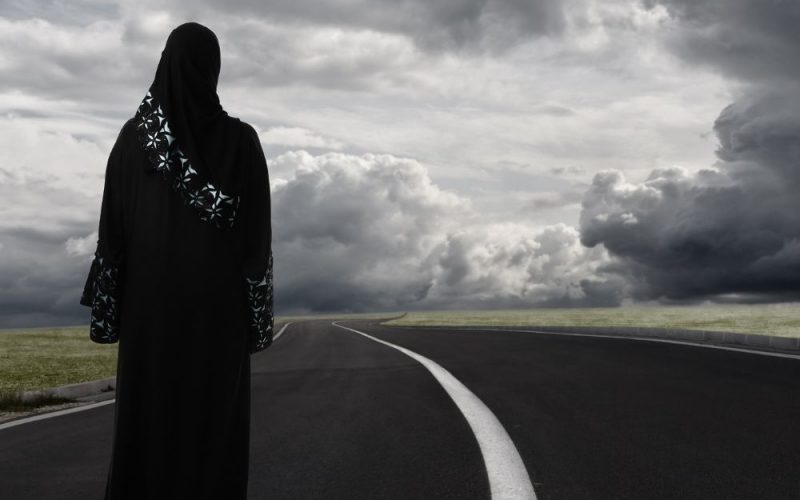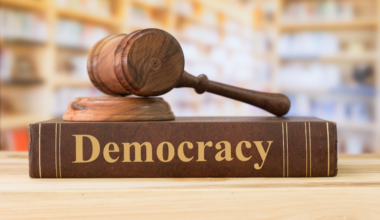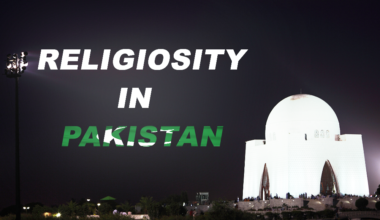FOREWORD: As we address this subject, a thinking mind has to acknowledge that there is no archetypical Muslim woman. There are hundreds of millions of them scattered across the globe.
They include a huge variety within their fold –like the huddled masses of peninsular Arabia, the flourishing Tunisians, the increasingly confident Indonesians, the emigrants to the West, the suffering Somalis and Sudanese, the daughters of the tribes in Pakistan and Afghanistan, the poor, the sick, the hungry and the very rich- trying to go about their lives as best as they can and are allowed to do it. However, we will take into account how the large swathes of traditional Muslim societies still look at and treat women. While the gender dynamics of a considerable part of the Muslim population increasingly reflects Islam’s ethos of social egalitarianism, in many parts of the world Muslim women continue to experience oppression, manipulation, and marginalization that is justified in the name of Islam. A number of Muslim scholars tout the Muslim legacy that has unambiguously empowered women while at the same time sponsoring hierarchical and unfair relations between men and women.
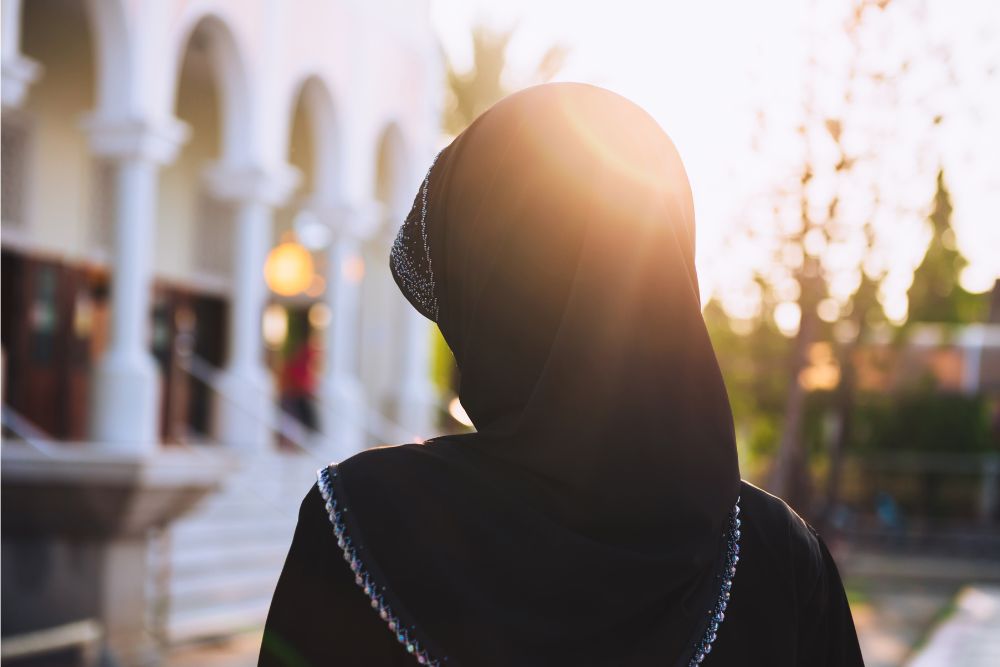
MAIN PART: Apart from the Islamic jurisprudence –that needs to be redefined and synchronized with the present age- our religious scholars need to adopt an enlightened approach towards gender-relations in a manner that conforms to Islam’s programme for human well-being and egalitarian justice. It is hypocritical to hold forth that Islam accords women deliverance and high status while simultaneously adhering to archaic interpretations that in today’s context are hierarchical and inequitable towards women. Contextualization of rulings about woman cannot be provided by merely referring to the textual and cultural validation of the practice in Muslim societies and thus using them as essential elements in the configuration of Islamic cultural values. For instance, the prohibition of independent female travel, requiring the presence of a male relative, (that may have had eminent sense at one point in history) continues to directly affect her religious freedom to undertake the performance of the obligatory Hajj. This prohibition that was probably reasonably based, in the society that then existed, on the juristic principle that “averting causes of corruption has precedence over bringing about that which has benefit” (dar’u al- mafasid muqaddam `ala jalb al-masalih) needs to be reconsidered in the context of the present day travel and logistical realities. Other similar juristic principles have also been regularly invoked to curb not only women’s rights but also the rights of minorities to function as full citizens in some Muslim societies. Hence, while Muslim societies and cultures have in fact evolved with time and so have their attitudes towards women and gender relationship, it is unfortunate that at the religious level we still profess allegiance to a jurisprudence that confers upon men arbitrary rights over women, for example; the marriage contract is meant to grant the husband a sort of ownership over the wife and the major spousal right established by the contract is the wife’s obligation to be sexually available in exchange for being supported by her husband. While talking about a husband’s rights over his wife, Imam Ghazali’s renowned Ihya ul ulum al-din states that if the husband’s body is covered with pus and blood, and if the wife licks and drinks it, her obligations to her husband will still not be fulfilled. Present day conservative views in this respect consist of mere paraphrasing of the traditional jurists, as they continue to insist on men’s and women’s differing marital rights and duties based on what they claim to be divinely ordained ‘roles’ of men and women. With the greater economic independence of women in the modern society and advanced biological knowledge about genetics and sexes, we need to question the patriarchal assumptions behind a number of practices and sharia laws, especially in the domain of matrimonial and sexual relationship between men and women, which Muslims consider essential to their religious beliefs. For example, Zia ul-Haq’s Hudood Ordinance denounces and punishes consensual sex between unmarried people but protects violent sex abuse of women as it does not have a term or provision for ‘rape’ and thus is not equipped to provide justice to a woman who has been raped. This leads to a patently unjust situation where the women seeking justice for being raped are often found guilty of adultery or fornication on account of admission of their being involved in sexual act by seeking justice for being raped.
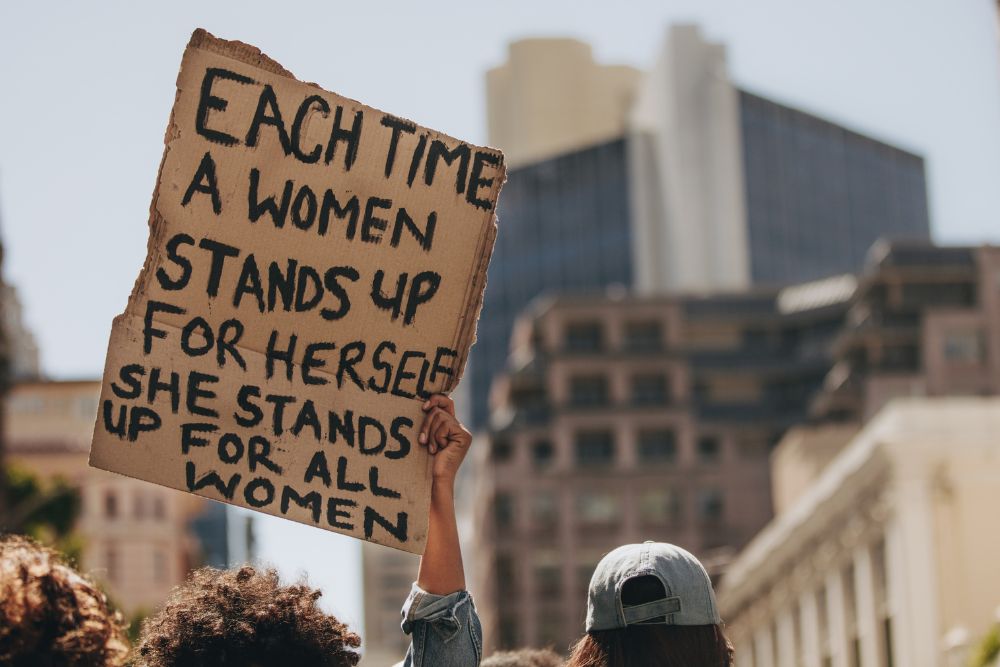
Another barbaric act performed against women is cutting of girls’ genitals, which though is not limited to Muslims only. It is called female circumcision and is aimed at reducing a woman’s sexuality in order to ensure a ‘chaste’ behaviour in her. According to the World Health Organization (WHO) the practice is still common across Africa and Middle East, where some 140 million women have been subjected to the practice, and in countries like Egypt, Sudan, Somalia, Mali, and Guinea over 90% of women have undergone it. In some of the countries the practice is a prerequisite for marriage and the people –Muslims and Christians alike- who continue to maintain the practice cite religious grounds to defend it.
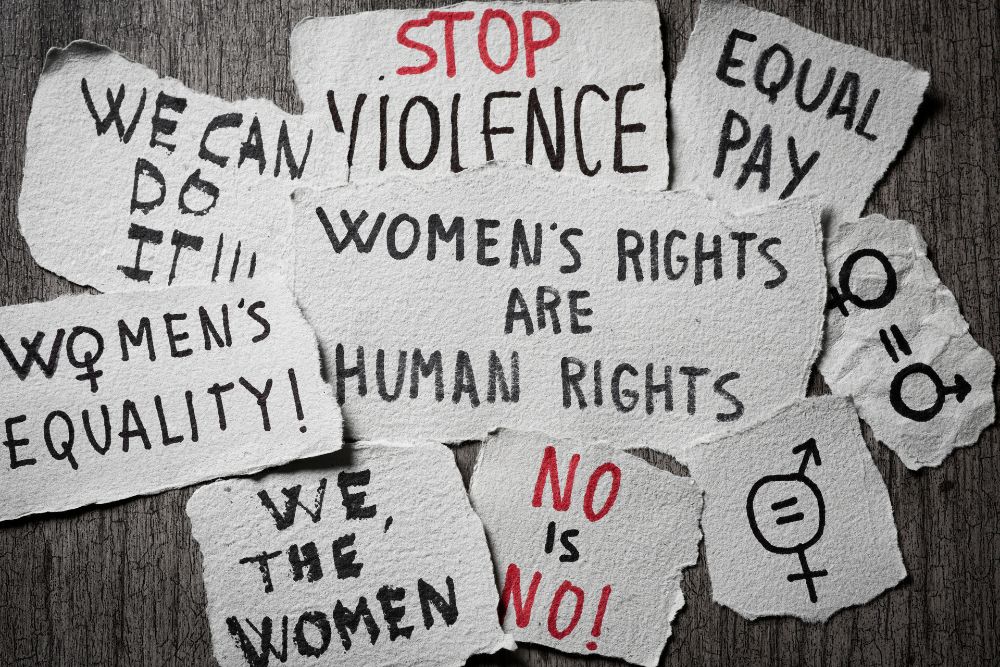
In fact all societies began with the concept that the public space belonged to the male, and woman’s role and rights and duties in it needed to be spelt out. While in some ancient civilizations such as the Sumerian, Egyptian, and Celtic, women were deeply respected and feminine dimension was revered, the suppression of feminine role over the past two thousand years has enabled the male ego to gain supremacy in the collective human psyche. Which has meant that ego is likely to take root and grow more easily in the male form than in the female. During the “Holy Inquisition” several million women were killed over an era spanning three hundred years. It was a Holocaust of its own kind where a woman would be branded a witch for a minor offence and would then be tortured and burned at the stake. In most major cultures –Christian, Hindu and others- during antiquity, women were accorded corporal punishments and were married off at a very early age, often before menstruation. Cultures and religions like Buddhism, Judaism, and Christianity tried to subtly restore female dimension. But women’s status remained largely reduced to being objects of carnal pleasure, child bearers, and men’s property. The religion thus was also utilized as an instrument to legitimize male power and privileges that had existed for centuries. It is therefore a misplaced belief that Muslim past is particularly embarrassing in that respect, instead the problem lies in the present. Over the past few centuries, most societies have evolved a great deal and while the West has made an enormous transition, other societies –Hindu for instance- have also made tremendous progress. We have unfortunately lagged behind, with little to show for the theocratic progress, on this count, over the last one thousand years. Thus, the followers of a religion that was the forerunner in giving women the right to divorce and property failed to carry on. Gender apartheid resurfaced and much effort was spent on defending institutions like concubinage or rape of women taken prisoners during the war. Some of the Islamic scholars were deplorably lax with the Quran to serve men’s lust for sex and to sanction sex slaves for Muslim soldiers. While commenting on the verse 24 of Sura Nisa (chapter 4) in Tafheem ul Quran, Maulana Maudoodi explains that a Muslim government has the right to distribute non-Muslim women captured during a war among the Muslim troops to serve as their sex-slaves and that a soldier is free to have sex with such a woman subsequent to her first monthly periods (to ensure that she is not pregnant) after she comes under his control. Maulana further explains that it does not matter if the female prisoner of war belongs to ‘people of the book’ and, no matter what her religion; the soldier has the right to have sex with her if he has been given possession of her. Today similar theology is used as a licence by Janjaweed militia in Sudan to rape Darfuri women who, despite being Muslims, are declared as non-Muslim enemies of Islam. In a discussion recently, I had to give examples of how the women have been treated in the three Islamist regimes of modern era in Saudi Arabia, Iran, and Afghanistan under Taliban. Up to just before Taliban started terrorist activities against ordinary Pakistanis, a sizable proportion of Pakistan’s population considered them a good example, if not the role model. Both Saudi Arabia and Iran, and hence their attitude towards women, command a large following and inspire admiration among the followers of their respective sects. Even in the most liberal of the Muslim countries like Algeria, Morocco, and Tunisia there are still some laws that are stacked against women.

The ire of men-controlled secularism also targets women. For example, in Turkey there are restrictions on women’s wearing a hijab but there are no restrictions on men’s attire or appearance. Why? Is Muslims’ secularism only endangered by women who choose to cover their heads?
To me it does not seem right when a lot of discussions about gender relations in Islam tend to reduce women’s faith and existence to hijab while there are many other more crucial social issues at stake that affect the lives of women. One would be very limited in exploring and defining the identity of a Muslim woman if that definition is largely circumscribed by what women wear. Hijab, no doubt, is a key symbol of the identity of many Muslim women. It should be entirely up to women whether or not they want to wear hijab. Who are men to decide to either force women to wear hijab or to deny them the right to do so? Besides, why should men in Muslim societies be allowed the liberty to either seclude and discriminate against women in the name of religion or to impose Western cultural ideas on women belonging to very different religious, cultural, and economic circumstances?
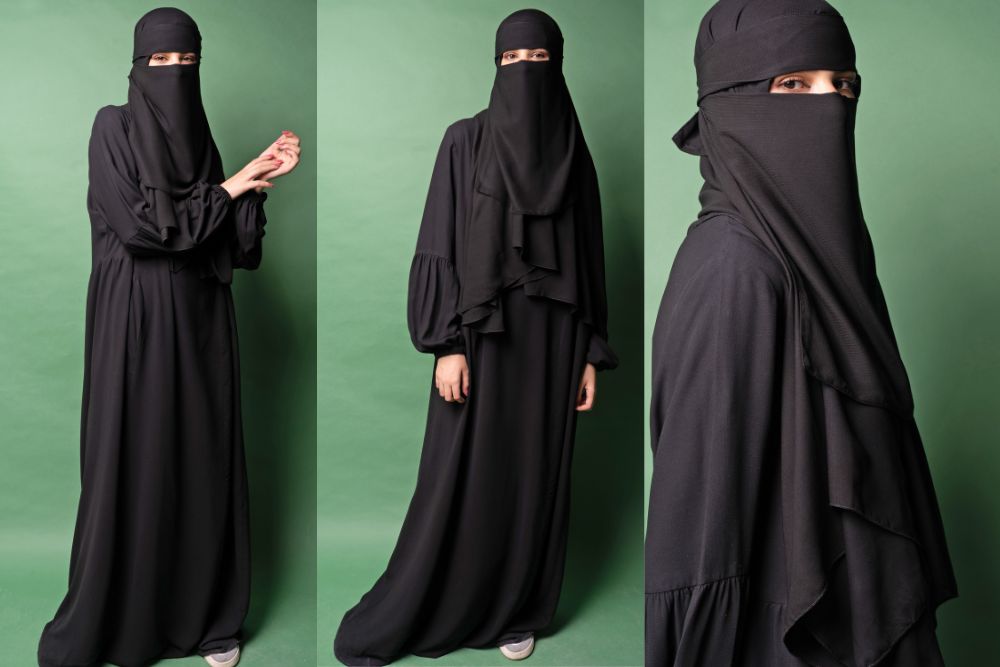
What thus constitutes desirable Islamic ‘hijab’ is another debate and, based on their research and understanding, different people have different interpretations. However it is also wrong to represent hijab as a symbol of the Muslim women’s subjugation because hijab is a multivalent phenomenon with multiple connotations in different circumstances varying from making a religious to a political, cultural, or a fashion statement. It is not uncommon to see women wearing matching fashionable hijabs with tight outfits and an uninhibited behaviour that clearly suggests that piety is not the sole guiding force for all hijab-wearers. While one can cite examples of women who are forced to wear hijab, I personally know many highly emancipated women who wear hijab solely based on their religious convictions or merely as an affirmation of their identity thus making hijab a synthesis of modernity and their traditions. I also know some women who, of their own free will I must precise, wear hijab in traditional Muslim societies (as in some parts of Pakistan) to protect themselves against probing patriarchal interest in their physical or sexual attractiveness or to have the liberty to work freely alongside men, thus turning hijab into a means to somewhat neutralize a sexualized male-dominated public space for themselves. These women do not wear hijab in more modern surroundings where men are used to women’s occupying the public space to an equal degree. As an example of hijab’s use as societal expression, many Iranian women who donned hijab during the revolution as a symbol of their resistance to Shah and encroachment of Western culture now want to remove their hijab in protest against the Mullah’s enforcement of it. Suffice it to say that the norms for dress differ from culture to culture and measuring Muslim women’s clothing against other cultures’ norms of dress is not the right gauge to assess the level of their emancipation.
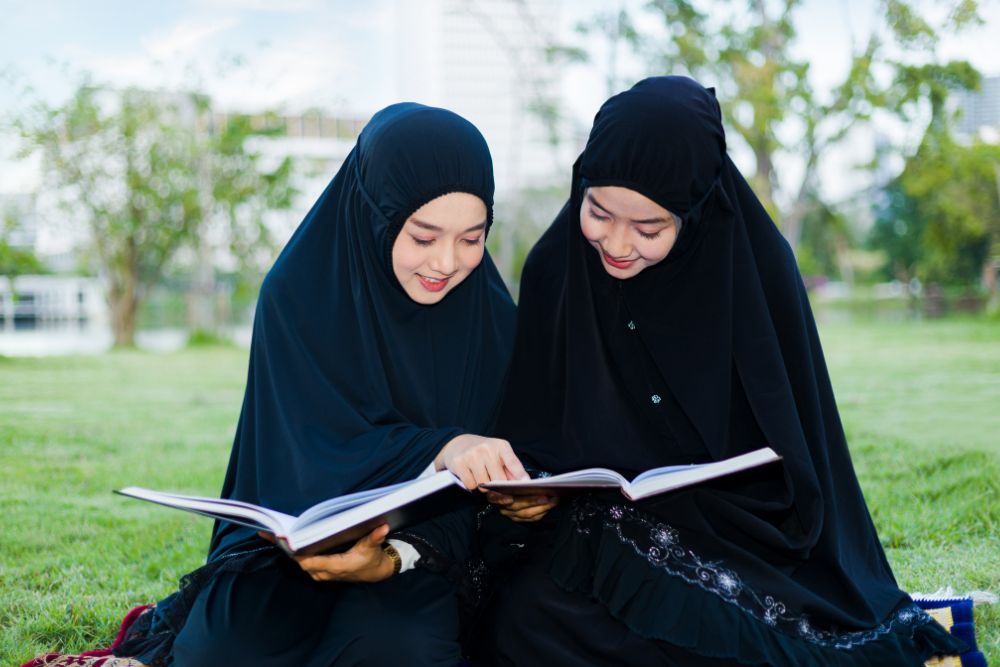
As I said above, it is true that over the past few decades the Muslim countries have also made significant progress in tune with the universal movement towards gender equality. Today, for example, in Saudi-Arabia two-thirds of university students are women. Though this is still very much work-in-progress and a lot needs to be done. In the latest Global Gender Gap Report prepared by the Swiss-based World Economic Forum –a survey that bases its evaluation upon the opportunity for women in education, health, business, and politics-, Muslim countries generally did poorly among the 134 countries covered by the survey and all of the 14 Arab countries included ranked in the bottom 30. Not long ago, a survey of 15,000 young Egyptians found that 67% percent of female respondents believe that a husband is justified in beating his wife if she speaks to another man.
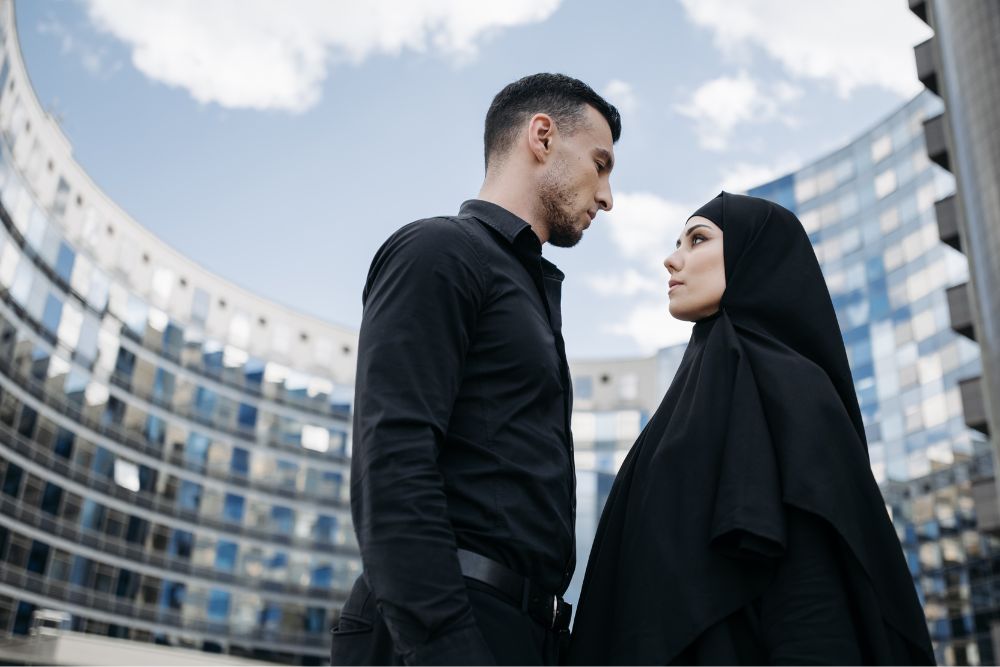
The Prophet always laid emphasis on the emancipation of women. The Quran accorded women the rights of inheritance, witness, and divorce centuries before these were espoused by other societies. The women in Medina were fully active in its public life and some even fought in the battles. The customs of segregating the women were adopted by the Muslims long after the Prophet’s death, thus bringing their treatment of women at par with the Christians of Byzantium and other contemporary societies. Even though Christianity had in the beginning been quite positive for women, it had started developing misogynistic tendencies within a couple of centuries of its advent. Similarly, as had happened in Christianity, in Islam also men hijacked the faith to perpetuate patriarchy. They started interpreting texts in a way that was negative for women and helped consigning women back to the status of being second class citizens. The societies {like Persia, Byzantine, and India} the Muslims went on to conquer also proved a poor acquisition in this respect, as in these social orders the women then had already been veiled, secluded, and marginalized for a long time. By the time of Abbasid Empire, women in Muslim world had almost completely lost the liberated status witnessed during the early decades of Islam. While Emperor Aurangzeb’s publicly killing his sister for falling in love with a commoner may not come as a surprise, even Caliph Haroon Rashid –the liberated ruler who even tolerated gays under his rule- brutally murdered his favourite sister (Abbasa) and his best friend (Ja’afar ibn Yahya al Barmaki) and his family for having an affair without his permission.
Given that all the renowned Quranic exegetists have been men in male dominated societies, it is not surprising that most translations and interpretations, of the verses related to the rights and obligations of man and woman in public and private spheres, favour men. {That is why probably the first translation made by a woman (The Sublime Quran by Laleh Bakhtiar published in 2007) has been rebuffed by the Islamists. (Just to clarify, this does not mean that I totally subscribe to Laleh Bakhtiar’s translation.} A respected contemporary religious scholar Dr. Abdulaziz Sachedina (a professor at University of Virginia) sums it up as follows in “Woman, Half-the-man”.

“Hence, although wives and daughters were given a stronger position than they had in the pre-Islamic Arab culture, in one area the Qur’an left the status of women to become the mawdu` (singular of mawdu`at signifies the actual state of a thing before a ruling can be deduced) for laws that permitted, though mitigated, unequal status between men and women, reducing a woman to “half-the-man.” Her distinctive contribution in determining her own social context was thoroughly excluded by eliminating her as the interpreter of her own objects and situations. Patriarchal structures of Arab culture, in the form of loosely camouflaged traditions ascribed to the Prophet, left her intellectually crippled, while the male jurists prepared the text of the laws for her insidious domination by male members of the society.”
‘Niqab’, for instance, is an example of such interpretations. Some Islamic jurists term ‘niqab’ as an obligatory attire for Muslim women and sometimes go to the extent of the women not wearing it as non Muslims. While covering the head and dressing with modesty can be termed as a cherished tradition for Muslim women, veiling was not a part of the Muslim society at the beginning and was adopted by it from Persia and the Byzantine areas subsequent to the Muslims’ conquest of these territories, where a veiled woman meant that she belonged to a rich family and the upper class. It is well after these customs were adopted that all schools of sharia were developed in 8th and 9th centuries. Rather than foreseeing a secluded existence for them, the Quran stresses upon women’s active participation in all parts of society and does not declare explicitly that women should be veiled. It is only Islamists like Sheikh Taj Aldin al-Hilal, the Mufti of Australia who just a few years ago declared that women were the ‘weapons’ used by ‘Satan’ to control men and that the women who do not wear hijab only have themselves to be blamed for rape, who want to see all Muslim women veiled and separated from public life. It is hard to understand how someone in his right mind can treat women as inferior and men as sexually uncontrollable. Hence, in the eyes of the fundamentalists it is women who must be secluded from the public arena to avoid lustful eyes of men and to be safe from molestation. Their interpretation of the Quranic verses induces unbending legal rules for women that are impervious to all human development and the changes in human society.
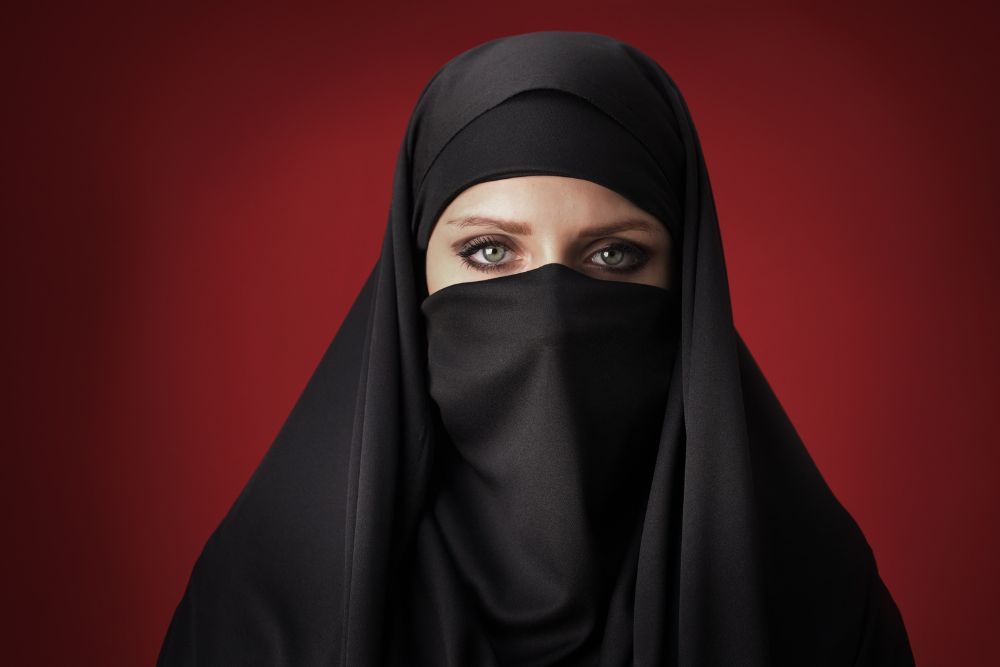
The debate about ‘niqab’ being banned in public places in France has, in recent years, created much furore. The French parliament resolved that the all-over veil “puts women in a relationship of subordination to men” and on grounds of dignity and equality between men and women it judges the garment “contrary to the values of the republic”. While there may surely be an element of political expediency to it, I think the French have the right to decide what is best for their country, just as Saudis and Iranians and others have the right to legislate what they deem best for their countries. There is also nothing wrong if France expects the immigrants or their offspring to adapt to French ways, and not the other way round. Unlike the headscarf, the niqab or burqa appears to be a restraint on female freedom and also symbolises what many people see as the repression that women can suffer. According to some surveys in European countries, while a majority of Muslim women wearing headscarf confirm that they do it out of choice, a larger portion of women wearing niqab report that they were forced to do so against their will.
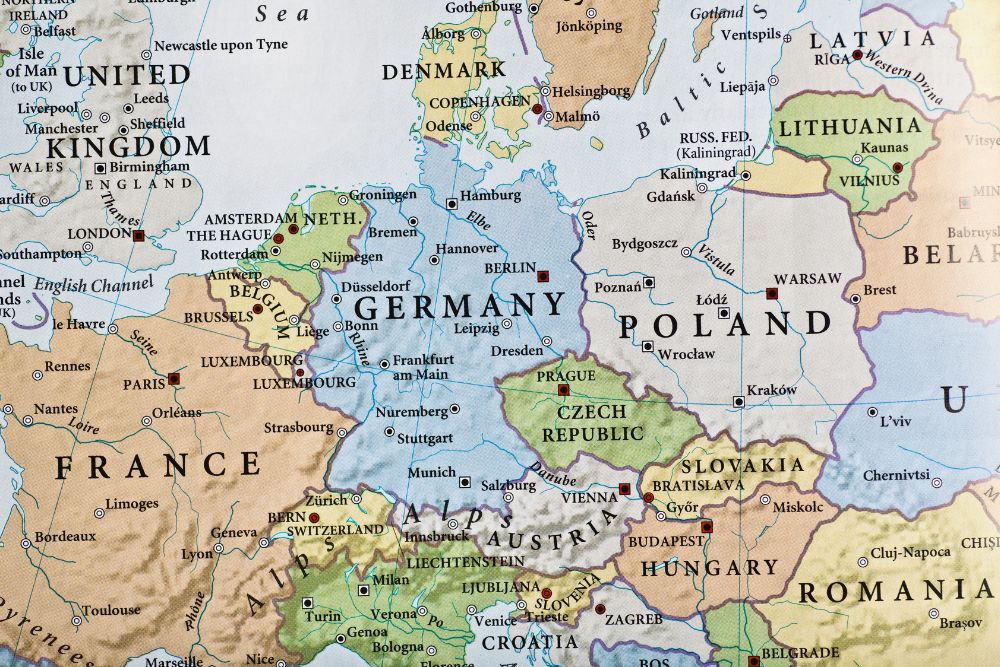
As an aside, while secularism remains a model for some societies, no country or society is perfectly secular. Neither is France, but based on my long observation over many years I feel that France -notwithstanding its many flaws- is as genuinely and deeply secular as any other country in the world at this point in time. {It was in France that a complete divorce between religion and state was first envisioned and became politically popular some two and a quarter centuries ago.} True to its secular credentials, France has always been keen to purge religion from the public space. Now most of the Europe, unlike America where the religion continues to thrive, is following suit. The European Union has resisted any mention of religion in its constitution and even Spain and Italy have outlawed religious symbols in public schools. The religious leaders –Catholic, Protestant, and others alike- continue to complain that the continent has become aggressively secular.
Coming backing to the subject, while many people find it difficult to see how stopping some people from walking around among the public in an absolutely unidentifiable and concealed state can impinge upon human rights or the ideals of freedom, there are also cogent arguments against the ban on the niqab. For example ‘The Economist’ had this to say in one of its leaders: “Yet the very values which Europeans feel are threatened by the burqa demand that they oppose a ban. Liberal societies should let people wear what they want unless there is s strong argument otherwise. And, in this case, the three arguments for a ban –security, sexual equality, and secularism- do not stand up.” According to this line of argument, while European governments are free to limit women’s rights to wear the burqa or niqab in circumstances where the face must be visible, such as in court or in a classroom, banning burqa altogether would be an infringement on the individual rights which their culture strives to protect. Besides, this move would also entail some negative ramifications such as stigmatisation of Islam to woo right-wing voters which in turn will create a defensive reaction. There is also a risk such a ban will engender the concerned women’s further isolation in the home.
In my view, a society has the right the stop people from walking around in a manner that makes any recognition impossible. Apart from that, as I said earlier, dictating what clothes Muslim women should wear or not wear should not be a prerogative of men and the choice should be left to a woman’s own free will. In terms of the fight for women’s rights too this does not represent the most urgent task within Muslim societies. There are much deeper problems concerning women within Muslim societies that need to be addressed. We need to struggle to ensure that marriage and family laws are equitable, women have equal and unhindered education and employment opportunities, domestic violence is curbed to the limits of possible, and Muslim societies devise frameworks for greater social inclusion of women. But unfortunately Islam’s gender ideology as still practiced continues to maintain a strong gender bias, while other societies have already made the journey to an equitable treatment of women. Why must we put up with such ambivalence towards women? Whereas the Quran all along enjoins an equitable treatment for women. Only if male interpreters had been so inclined, they would have developed gender equitable interpretations of the Quranic verses. But they have been too full of men’s breadwinning prowess and preoccupied with biological and social difference between the two sexes and the men’s entire honour being located in the body and conduct of a woman.
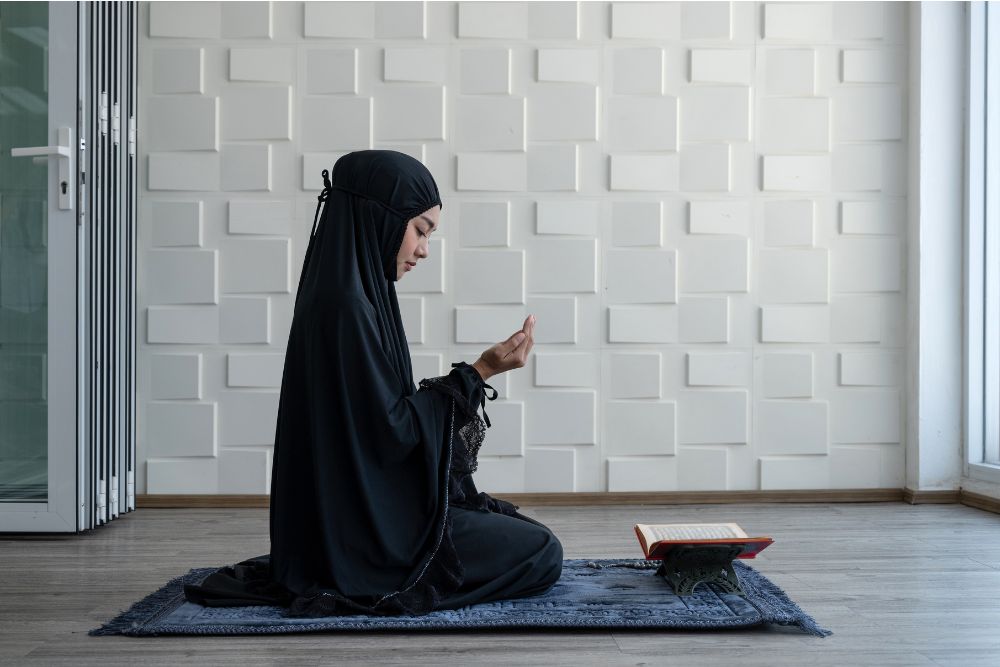
While talking about the gender relations, the Quran’s core theme is justice. The Quran dictates the imperative of justice as both an individual and the society’s collective responsibility. Placing women in oppressive conditions or treating them inequitably, in the context of the contemporary societal situation at any point in time, is incompatible with Islamic morality. In today’s circumstances justice can only consist in affording equal opportunity, rights, freedom, and value to both men and women. (Which is increasingly the case in most Muslim countries). The Quran clearly meant to protect women from the abusive situations and unfair treatment that was their lot in the society at that time and addressed specific problems that sometimes came up in the historical context. For example: the Quran prohibited people from murdering their young daughters, it gave women financial and property rights, and it prevented men from misusing divorce (and the ensuing Idda) to manipulate women. However, in asserting moral and ethical principles that are permanent and universal in scope, the Quran’s intent for the Muslim society is to make progressive improvement in the condition of women in keeping with the moral objectives articulated in it. In the context of Arab society at the time of its revelation, the Quran’s message is highly progressive and empowering for the women. It methodically denounces the conditions that were oppressive towards women. It granted them a share in inheritance, instructed men to treat women gently and with respect, declared compassion and equability as the basis for the cohabitation of a man with a woman, forbade men from treating women as property (for example renouncing the Arab custom conferring upon a man the right over his brother’s wife after the brother’s death), prohibited terrorizing of women to usurp their money et cetera. For the Quran, women have an equal right to be financially independent. The Quran also emphasizes equality between men and women in their responsibility towards God and their responsibility in this world. Any inequalities that we find embedded emanate from incorrect interpretations of the Quran and the Prophet’s teachings owing to societal influences that shaped the early jurists’ and theologians’ worldview and their resulting interpretations of Islamic texts and not because Islam required it any more than any other religions or societies prevailing in that period of human history. Some of these misogynist accretions continue to persist only because we persist in our belief that these jurists’ interpretations are immutable. There is no reason that Muslims should remain locked in a theological prison that justifies an oppressive treatment of women and religious minorities in the name of God.
There is clearly a need to develop a more emancipated and egalitarian gender-based social order within the Muslim societies in step with the contemporary world. This is not as radical as it may seem. Conventionally, Muslim religious and legal scholars have argued from the standpoint that the man is obliged to provide food, shelter and clothing for his wife. This premise then triggers woman’s obligations towards her husband including obeying his sex demands. Hence men’s economic role brings them the authority over women and even to punish them under certain circumstances. {Different scholars have widely varied in their interpretations of the relevant verse –Sura Nisa, verse 34- in the Quran.} Thus men’s almost complete control over women eats away at the rights –e.g. to own and manage property, to work outside the home, the freedom to pursue their studies and career- that Muslims claim Islam was the vanguard to confer upon women. Hence any meaningful change in the orthodoxy’s approach towards women has to start from re-examining the postulation that women need to be protected, looked after, and controlled. The second notion that needs to be reassessed is the belief that it is necessary to place restrictions on women in order to uphold the morality of the society. The Quran demands equal chastity, discipline, and sexual purity from both men and women and, hence, the notions suggesting that woman’s destiny is dictated by her biology should be discarded.
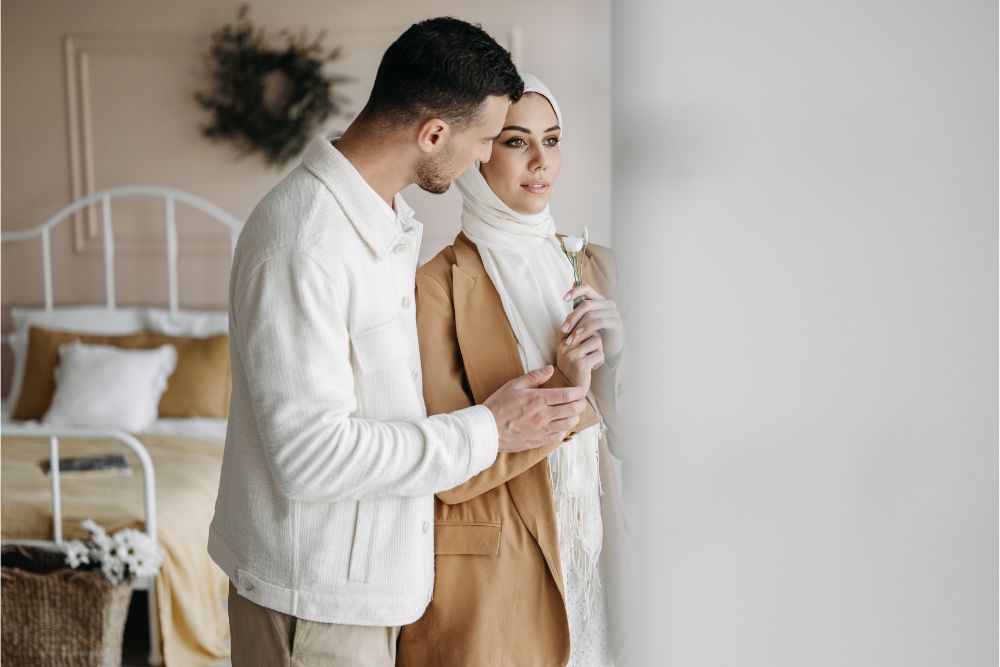
CONCLUSION: As explained in the essay, patriarchy existed well before Islam and, despite the Quran’s progressive outlook on gender relations that challenged a number of patriarchal practices that were rife at the time of its revelation, rediscovered its hold on Arab/Muslim society soon after the Prophet’s death. Thus by the time of the formative period of Islamic law the Muslim society had become firmly patriarchal and has remained so ever since. However, with modern insights about human nature and social and economic changes, the practice of religion has to adapt itself to the challenges of current world. After all other beliefs also continue to evolve. For example, male monarchic rule was also deeply embedded in the Muslim psyche and to question the rights of monarchs (as Khalifas or Sultans) to rule was almost unthinkable and was viewed as apostasy by a majority of the subjects. Today an increasingly wide majority of Muslims acknowledge that democracy is a better system than monarchy or Caliphate and their Islam is not any less devoted for so believing. It is just that the notions of governance have realigned themselves with the advancement of human society as a whole. Similarly, despite the Quran’s recommendation to free slaves and the Prophet’s personal conduct in the matter, at its inception Islamic law embraced the practice of slavery that had been prevalent since before the advent of Islam and up to not very long ago Muslims believed that slavery was an authorized institution. Yet today the notions have changed and most Muslims would abhor the very idea of buying and owning fellow human beings as a notion of abject oppression. In the same way, through most of their history Muslims, like the rest of the world, have assumed that women were inferior to men. This was just another indicator of patriarchy. It is not surprising that the Islamic society and legal interpretations adapted themselves to this assumption of patriarchy. But today we would not become lesser Muslims by acknowledging women’s equality in all spheres of life. Similarly we would also not become lesser Muslims by rejecting polygamy like we have rejected slavery. It is time to question the inherited wisdom passed down by centuries of patriarchal supremacy in the Islamic tradition that attempts to restrict women’s role and rights and to muster the sense of justice to cast aside the part of our heritage that leads to the discriminatory and exclusionary treatment of women rather than delving into apologetic or explanatory rationalizations. Hence the laws that countenance unrestricted divorce privileges for men while placing restrictions on women’s ability to obtain a divorce, that permit unfettered polygamy, that place restrictions on women’s rights to travel and their rights or study when married, and that take a benign view to honour killings are anachronistic and need to be challenged and reconsidered.
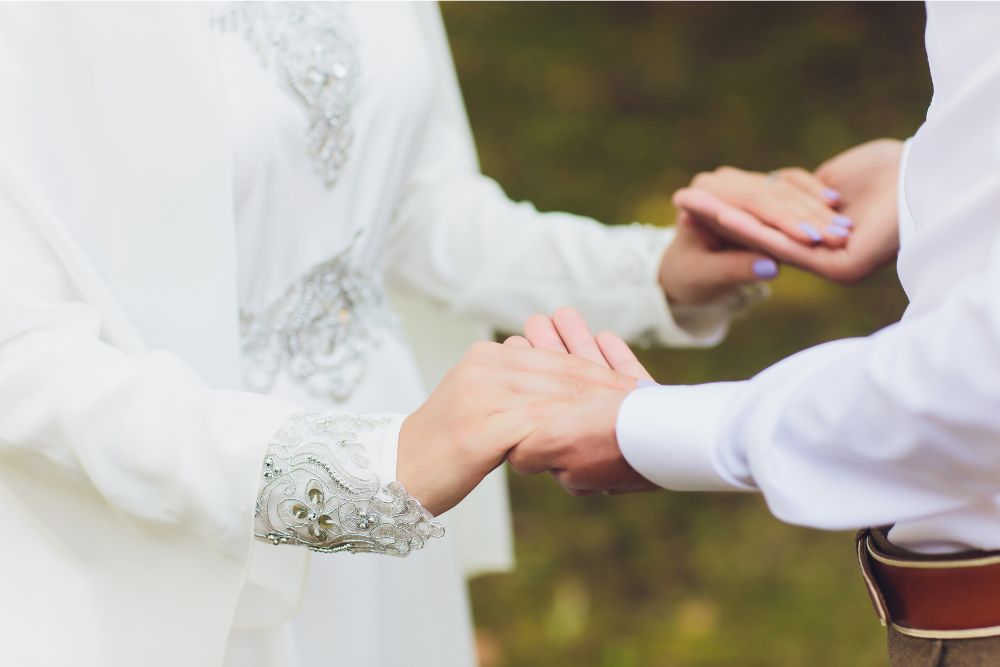
As we have seen above, it can be convincingly argued that a major part of the present epistemological crisis in Muslim jurisprudence over women’s issues is due to the blatant absence of female voice in Islamic legal discourse as women were never participants in the intellectual process that produced the prejudicial rulings encroaching upon the personal status of women. An epistemological redefinition of the status of a Muslim woman in modern society should be dependent upon Muslim women’s participation in the relevant legal and ethical debate. Otherwise women’s rights will always depend on an emblematic dialogue conducted by male jurists lacking the necessary qualification to determine women’s rights in a patriarchal background. Without their participation in that interpretive process, Muslim women stand little chance to overcome being reduced to the legally silent, morally segregated, and religiously veiled ‘half-the-man’.
Women who believe in equality and justice also have an important role to play in galvanizing their fellow women to fight for a social order that allows women to live the destiny that is theirs. This is very important because many women in Pakistan and other Muslim societies have been fashioned by history and tradition to internalize the ideas of male supremacy and female inferiority and its religious basis. The reinforcement of these ideas through families, orthodox literature, media, and religious platforms helps maintain a deformed self-concept in these women. Hence, they are often suspicious of –and sometimes even fight against- the few women who seek to throw off gender discrimination in their societies, attacking them as being anti-Islamic or elitist and thus being irrelevant to the majority.

Despite various drawbacks that their societies present, the women in countries like Pakistan, Indonesia, Egypt etc. have a wonderful record of slowly but surely endeavouring for their full human rights. What is remarkable is that their struggle has been waged in largely agrarian and tribal societies with high illiteracy rates among men and even more so among women. They are struggling in very religious societies where people are often taught that an inferior role for women is mandated by their religion and they have to make their way amidst these deeply held misconceptions about women ingrained in their culture.
However, we still have a long way to go. In order to be able to practice true Islam, which is egalitarian in its teachings and application, we should be open to interpreting the texts and traditions in keeping with the social, scientific, educational, and economic context of present times. In an age when women are going on space missions, flying fighter planes, performing life-saving surgeries, and leading nations, we cannot continue preaching about woman being created as a derivative from man’s rib and thus being programmed to be more emotional and mentally fragile. We must let these myths expire.
The writer is the author of four books that can be seen at https://www.amazon.com/Asif-Zaidi/e/B07J2S7R11

